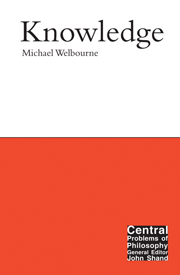2 - Analysing knowledge Plato's way
Summary
The Meno account
As we have already noted, Plato's own response to Meno's Challenge in the dialogue that bears his name is metaphorical and thin, and it is hard to know what to make of it. It is, however, the first gesture we have in the direction of a tripartite analysis. Socrates puts it forward in the light of the recollection theory that he has just presented as his response to Meno's Paradox. The idea, it will be remembered, is this: when we ask questions such as “What is knowledge?”, “What is virtue?”, and so on, there is a sense in which we do know the answers already, having learnt them in some previous mode of existence; merely we do not remember them very clearly.
Plato illustrates this idea dramatically. He makes Socrates summon an uneducated slave and confront him with a question in geometry. First, Socrates draws a square whose sides are two feet by two feet. The slave sees at once that the area of the square is four square feet. The question is, if we double the area, making it eight square feet, how long will the sides then be? The slave immediately replies that they will be double, that is, each will be four feet. In fact, of course, this instant, intuitive answer is wrong. Plato now has Socrates subject the slave to a series of questions; it is an essential element of this little drama that at no point does Socrates actually tell the slave anything to the point.
- Type
- Chapter
- Information
- Knowledge , pp. 23 - 35Publisher: Acumen PublishingPrint publication year: 2001



